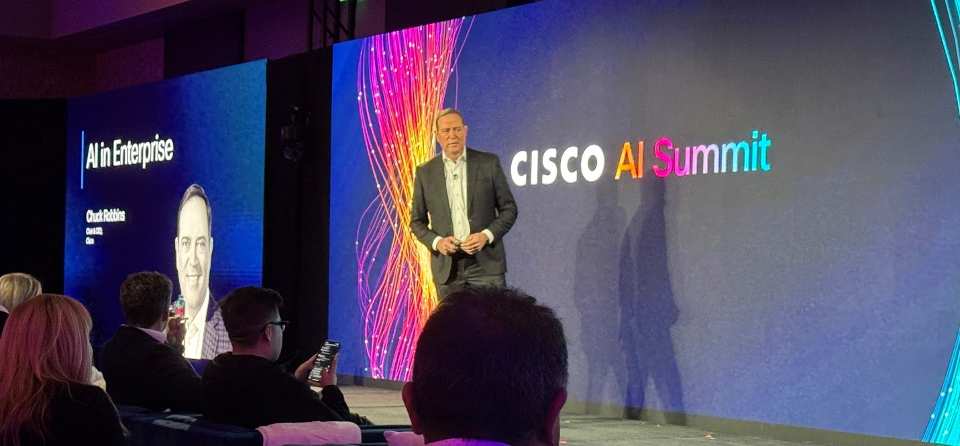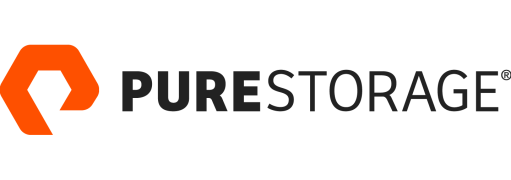
Cisco held its first AI Summit earlier this month in Palo Alto, California — and from my perspective, it stands out as the best AI event I have attended to date. The conversations featured a Who’s Who of tech innovators in the epicenter of AI innovation, serving as a dais for the company’s announcement of a new security platform: AI Defense. In this research note, I will provide my insights on what was shared with a small group of industry and financial analysts and global enterprise executives. Most importantly, I’ll highlight what I found noteworthy about the content and Cisco’s newly minted approach to AI security, which is expected to be generally available later this spring.
Modern AI applications and use cases continue to be at the center of many technology event conversations — and for good reason. Gen AI is poised to transform whole industries and, in the process, deliver new levels of employee productivity and operational efficiency, along with improved cybersecurity posture. Cisco’s inaugural AI Summit brought together thought leaders, ecosystem solution providers, and customers for genuinely deep discussions related to silicon, data management, governance, security, developer operations, marketing, search, venture capital, and more.
My Favorite Cisco AI Summit Sessions
Cisco chief executive Chuck Robbins kicked off the event, setting the context for the sessions that followed. The company continues to expend considerable effort in researching enterprise readiness to adopt AI solutions, as evidenced by its AI Readiness Index reports. Last year, Cisco published its findings across six pillars — strategy, infrastructure, data, governance, culture, and talent. Robbins drew from that data at the event to share that only 10% of its surveyed customers are fully ready to leverage the power of AI. That is a telling statistic, one that captures how fast modern AI applications and workloads are moving relative to previous technology sea changes such as cloud computing — and how unprepared enterprises are to leverage it.
After the Robbins keynote, three of the conference sessions stood out for me. The first focused on the power of silicon with Groq, Inc. Groq develops purpose-built silicon for AI — what it calls a language processing unit. The company’s LPU is designed to process the unique speed and memory requirements of large language models, the underpinning of gen AI workloads. My colleagues and I have written about the evolution of Ethernet and how companies including Marvell and AMD are leaning into custom silicon to unlock new value in AI with respect to faster, more performant networking and interconnect solutions for front- and back-end deployments. However, it’s not enough simply to provide lower latency and higher performance to address the demands of modern AI applications. In my opinion, the single biggest issue facing infrastructure providers is power consumption and the related need for more sustainable solutions. Those silicon providers like Groq that can unlock power efficiency alongside performance will reap the rewards in the form of market-share leadership.
The second session I found noteworthy was one focused on agentic systems with Box. Many corporate pros are familiar with Box, a cloud storage company that is innovating beyond its core product set with new tools that allow enterprises to build and manage custom AI agents through Box AI Studio. (My colleague Melody Brue wrote about this in detail a couple of months ago.) Agentic AI has great promise, and many industry pundits, including me, believe that it has the potential to birth a trillion-dollar industry. Agentic AI aims to build upon gen AI, moving from user prompts for content creation to the autonomous handling of complex tasks and workflows. The power of agentic AI lies in its ability to independently weave a set of separate tasks together, learning throughout the process. The uses cases are nearly limitless because AI agents can automate tasks that are tedious or prone to error, improve customer support, or transform both consumer and commercial applications and workflows in other ways. The session with Box went far to demonstrate agentic AI’s potential, as well as the opportunity for both Box and Cisco to facilitate its deployment.
However, both generative and agentic AI require safe and secure methods to ensure the integrity of how agents answer questions and generate content, which brings me to the third session I found especially impactful. Cisco’s Jeetu Patel, who now leads the company’s networking and security solution development efforts as chief product officer and served as the event’s master of ceremonies, spoke to the unique security challenges created by algorithmic models. Patel shared that, broadly speaking, both large and small language models are not deterministic in nature and can be easily compromised, especially as AI deployments become more hybrid, extending from the cloud to network edges and personal devices at massive scale. I wholeheartedly agree with his assessments. Safety and security will become paramount for both infrastructure protection and the use of modern AI. Patel used that context to announce Cisco’s latest AI security innovation — AI Defense.
Cisco Launches AI Defense to Protect Modern AI
Cisco says that AI Defense will allow enterprises to develop, deploy, and secure AI applications with confidence. It aims to provide an end-to-end set of capabilities that protect the use of modern AI applications, safeguard against AI’s misuse, prevent data leakage, implement access control, and leverage the power of network observability to dynamically protect companies. From an initial look, it is a compelling set of capabilities spanning AI application discovery, runtime security, and model validation.
To my mind, the model validation aspect is a potential game-changer. Cisco recently acquired Robust Intelligence, a company that specializes in automated AI security tools. Given AI Defense’s announced general availability in March, Cisco is quickly integrating Robust Intelligence’s automated red-teaming capability to enable dynamic guardrail protection. Historically, red-teaming has been a manual, labor-intensive process employing ethical hackers to break organizational security systems to expose vulnerabilities and inadequate security controls. Cisco claims that its automated red-teaming methodology is the first of its kind, and if that is the case it could command a significant advantage in delivering model validation more quickly and at scale. Only time can tell AI Defense’s overall value, but if Cisco can effectively move its customers and prospects into early preview, that could serve as a fast ramp to revenue for AI Defense.
Tipping the Scales in Favor of Defenders
Cisco’s AI Summit went a long way toward demonstrating many different business opportunities for Cisco tied to the transformative impact of modern AI within the enterprise. First and foremost, the event was highly educational, bringing industry luminaries together to share developments and lessons learned along the AI journey. It also highlighted Cisco’s capability to serve as a trusted AI advisor, and to provide solutions including AI Defense and the Hypershield security architecture launched last year. I expect that these two solutions may merge over time, but one thing is certain in my mind — Cisco is doubling down on cybersecurity and is tipping the scales in favor of the defenders.






















































































